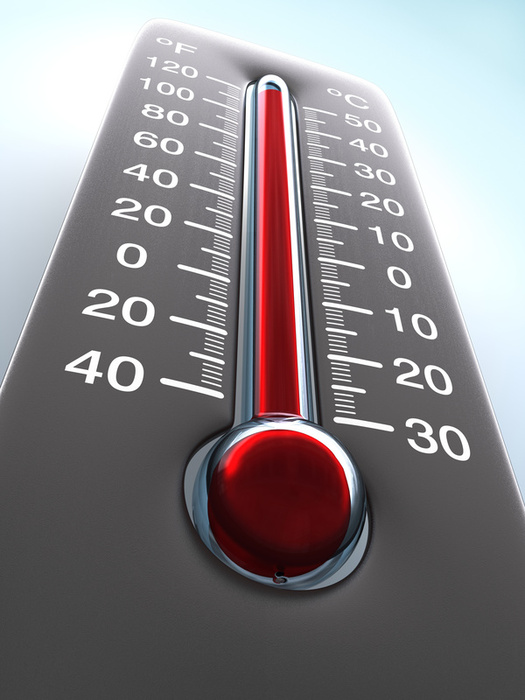
What are the signs of heat stroke? is there a difference between heat stroke and heat exhaustion?
Heat stroke can be described as a form of hyperthermia, a condition wherein body temperature increases due to inappropriate thermoregulation. along with unusual body temperature the condition is also accompanied with neurological as well as physical symptoms. There are other two similar conditions namely heat cramps and heat exhaustion, but these two conditions are not as serious as heat stroke, which is a serious medical condition and emergency medical aid may be required, properly and timely. Heat stroke and heatstroke are both the same, as both the term is used to refer to the same condition.
Due to metabolism the body of afflicted individuals generates heat. this heat is usually dissipated either through evaporation of sweat or radiation of heat through skin. However when body is exposed to high heat, considerable humidity or extremely hard work under the sun, the body is unable to dispose the heat and the temperature of the body increases significantly to even 106 Fahrenheit. Heat strokes may also occur due to dehydration. in case of a dehydrated individual, he may not sweat quicker or sufficient enough to dispose the heat from the body which may result in increment of the body temperature.
Heat stroke may also be accompanied with signs and symptoms; some of the common symptoms of heatstroke are:
• High temperature of body
• No sweat even under extreme exertion and hot climate; accompanied with flushed dry skin.
• Fast or rapid palpitation
• Respiration difficulties
• Poor concentration or confusion
• Agitation or anxiety
• Delusion or disorientation
• Seizures, also sometimes referred to as fits.
Some of the uncommon symptoms of heat strokes may be mild to moderate. sometime people may get scared as some symptoms of heatstroke may also be similar to heart attack and other such serious conditions. in few cases an individual may also experience heat exhaustion prior to affliction of heat strokes. Heat exhaustion itself has some symptoms which are mentioned below.
• Vomiting
• Spasm or aches in muscles
It should be known that symptoms of heat stroke may vary and different individuals may experience different signs and symptoms of heatstroke. in some cases, heat stroke may suddenly develop without taking any time.
Heat stroke is an unusually high body temperature that includes physical and neurological symptoms. Compared to heat exhaustion heat stroke is a real medical emergency that may be fatal if not attended to or treated. Heat exhaustion is a mild heat related illness that may cause lethargy and other problems. Heat exhaustion is due to being under the sun for a long time, dehydration and has symptoms like nausea, headache, vomiting, dizziness, muscle cramps, paleness, weakness, fainting, fatigue and excessive sweating. the skin is moist and cool. if heat exhaustion is not treated, it can manifest in the form of heat stroke.
Heat stroke patient should seek immediate treatment in order to avoid permanent damages to organ. when heatstroke afflicts anyone the first treatment that should be given is to cool the person.
A person with heat stroke should be cooled, he/ she should be taken to a shady place, try to remove clothes to make him/ her feel relaxed. Pouring cold water on the victim’s body may help in reducing heat. you may also use garden hose to put water on the patient. Also fan the victim and apply ice packs around the groin region and under armpits.
If possible one should try to monitor the body temperature if thermometer is available and continue with cooling the body of the victim until his/ her body temperature lowers to 101 or 102 Fahrenheit. in case of emergency it is also essential to notify emergency services such as 911 etc.
The heat index helps you know how it feels outside in the shade. this is not to be consumed with the temperature outside. the heat index is a measurement of the temperature when relative humidity is combined with air temperature. this means if there is overhead sun, the heat value index is even more So a head index of 90 degrees Fahrenheit can be dangerous.
1. When the temperature is high, stay indoors.
2. If you have to go out, wear a sunscreen on the exposed parts with SPF of 15 or more. Take a hat or an umbrella to protect yourself from the sun. Wear light colored, loose fitting clothes.
3. Drink lots of water; carry a bottle of water with you. please bear in mind that heat related illnesses are not just due to high temperature but also due lack of salt in the body. Water and sports drinks can replenish the salt that is lost through sweating.
4. Ideally try to do most taxing outdoor activities before 11.00 am and after 5.00 pm
5. Drink water or healthy fluids every 15 to 20 minutes, even if you are not thirsty. Check the color of your urine, if it is dark colored; you are dehydrated if the urine is pale colored, you are good. Read about benefits of drinking water
Also Read:
- Stroke Warning Signs in Women and Men
- Transient ischemic attack Symptoms, Mini Stroke
- Cerebellar Stroke- Recovery, Symptoms, Treatment
- Brain Tumor Symptoms
- Meningitis Symptoms in Children, Adults